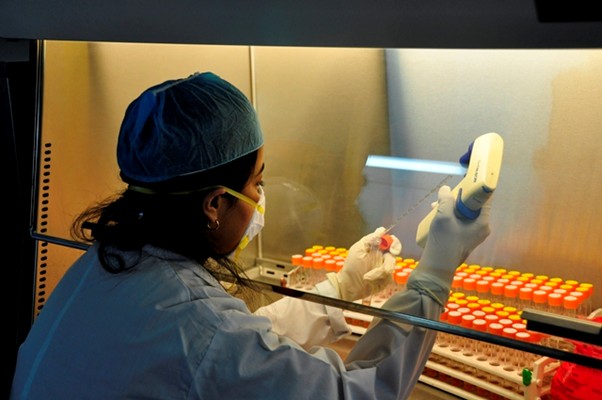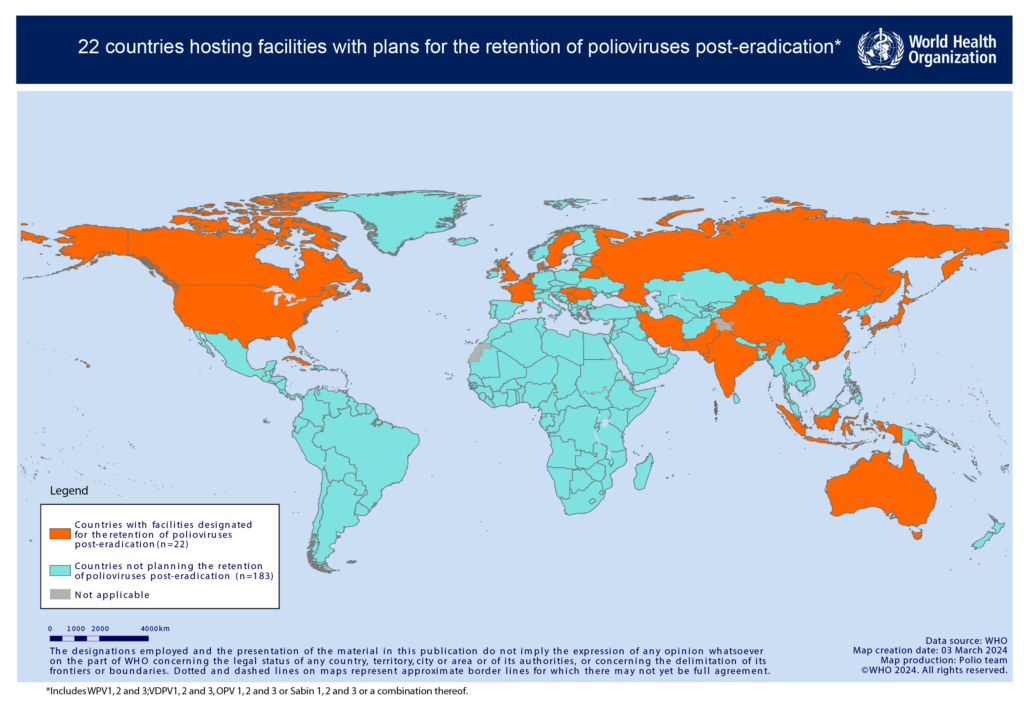Latest containment requirements for wild and vaccine-derived poliovirus types 3 and 1
What is containment?
Containment includes biosafety and biosecurity requirements for laboratories, vaccine production sites, or any other facility that handles or stores polioviruses, to minimize the risk of these viruses being released into communities. Containment also concerns risk mitigation measures associated with field use of some live oral polio vaccines. Containment is a key objective of the GPEI’s Polio Eradication Strategy 2022-2026, and will be critical for achieving and maintaining a polio-free world.
Two of three strains of wild poliovirus have been declared globally eradicated. In September 2015, the Global Commission for the Certification of Eradication of Poliomyelitis declared wild poliovirus type 2 as eradicated, and in October 2019, wild poliovirus type 3 followed. Wild poliovirus type 1 remains circulating in Afghanistan and Pakistan, though geographic spread of the virus and case numbers of polio caused by the strain are very low.
A number of facilities worldwide, however, still handle or store types 1, 2 and 3 polioviruses for activities such as vaccine production, polio diagnostics and research. Further, oral polio vaccines made with weakened, live vaccine virus strains continue to be used across the world for outbreak response or routine immunization.
It is important that all poliovirus type 2, and all wild and vaccine-derived poliovirus (VDPV) type 3 materials are destroyed, or safely and securely contained in facilities that retain them. The same applies to wild and VDPV type 1 materials in all countries excluding Afghanistan and Pakistan, which are still polio-endemic. Further, it is important that inventories and appropriate destruction of unused vaccine containing live type 2 poliovirus strains is conducted as per GPEI outbreak response guidelines (currently, measures only apply to live type 2-containing vaccines).
The accidental or deliberate release of the virus from facilities, or the potential emergence of VDPV due to vaccine mismanagement in areas of low population immunity could result in the return of disease caused these strains.

 Click
Click